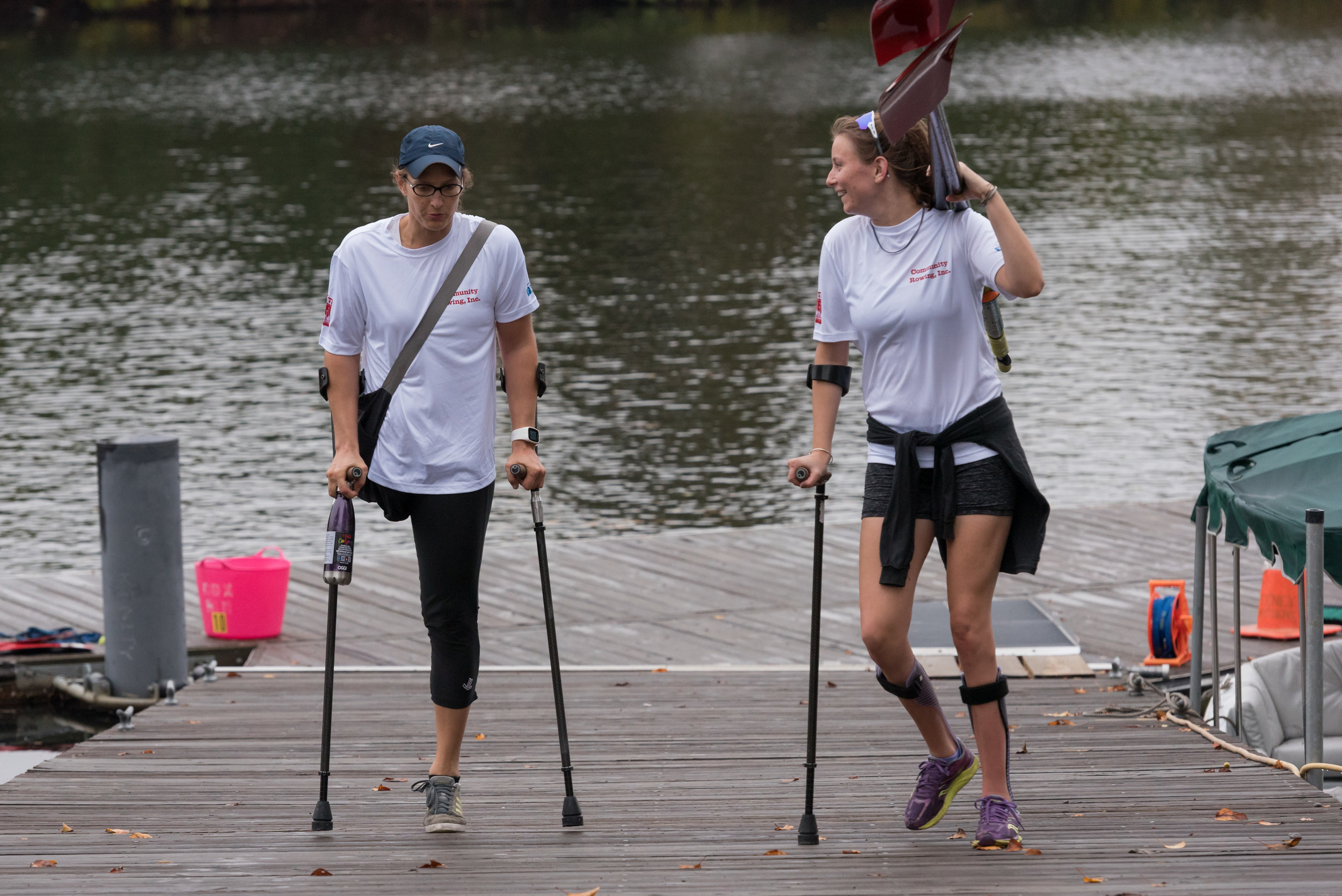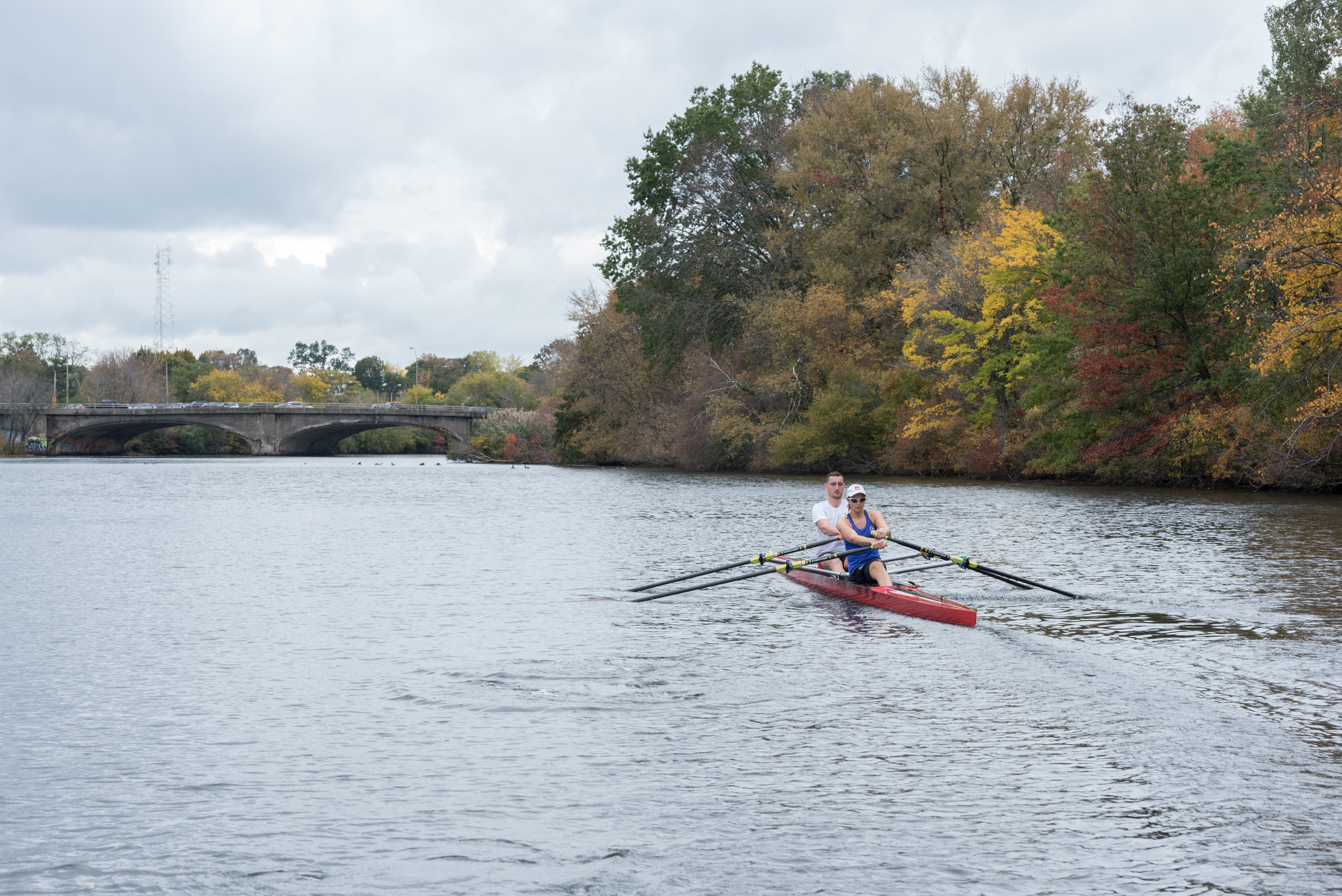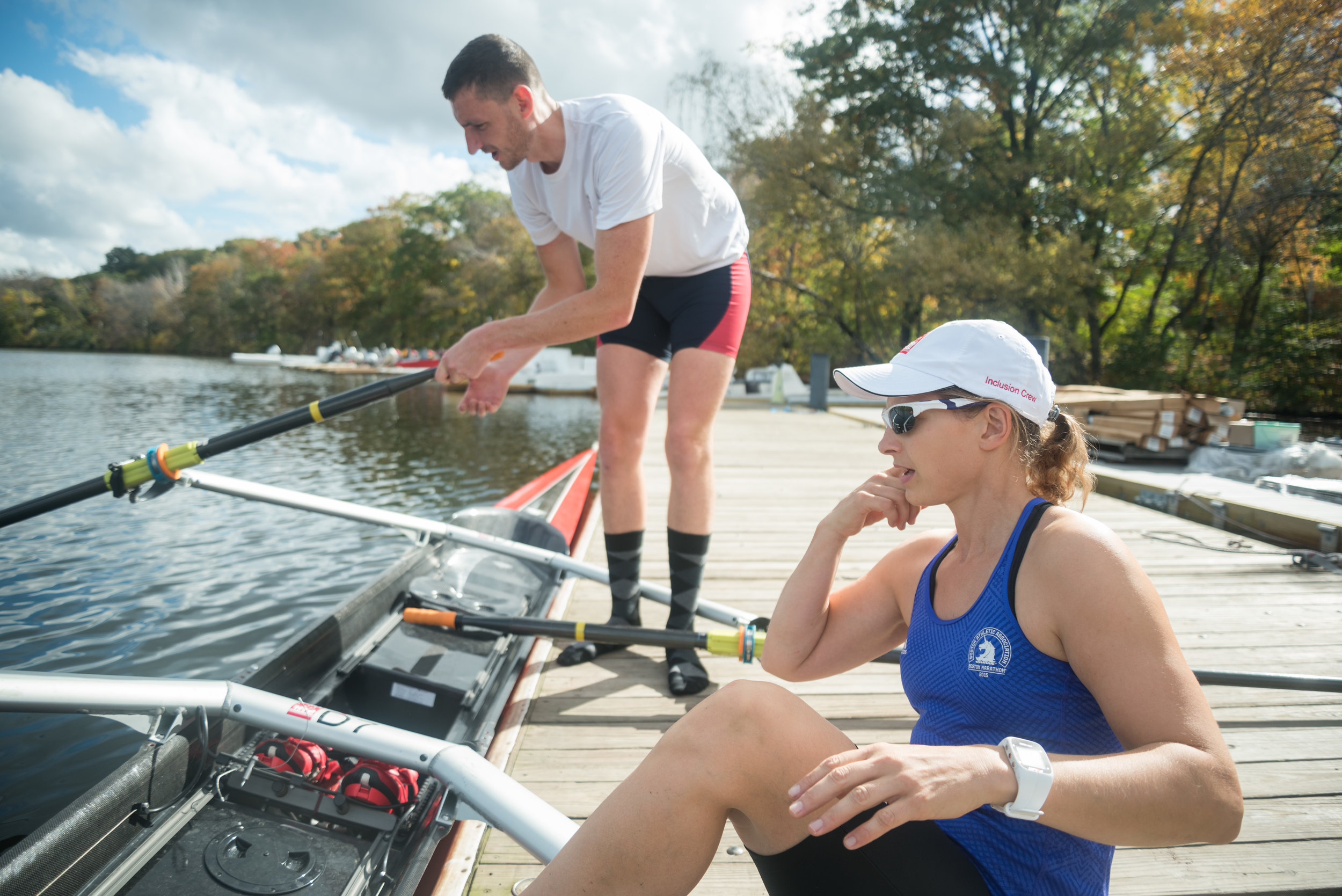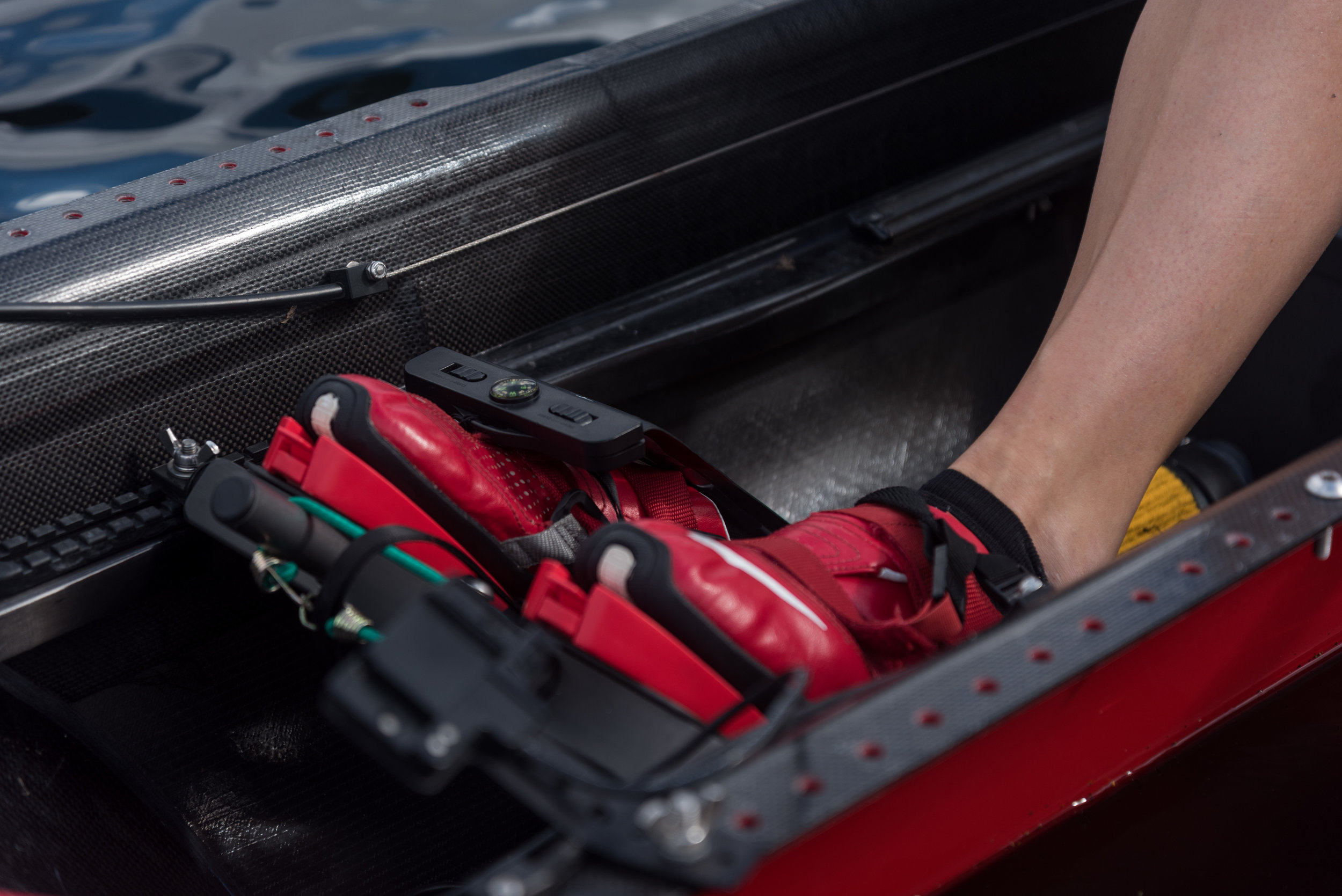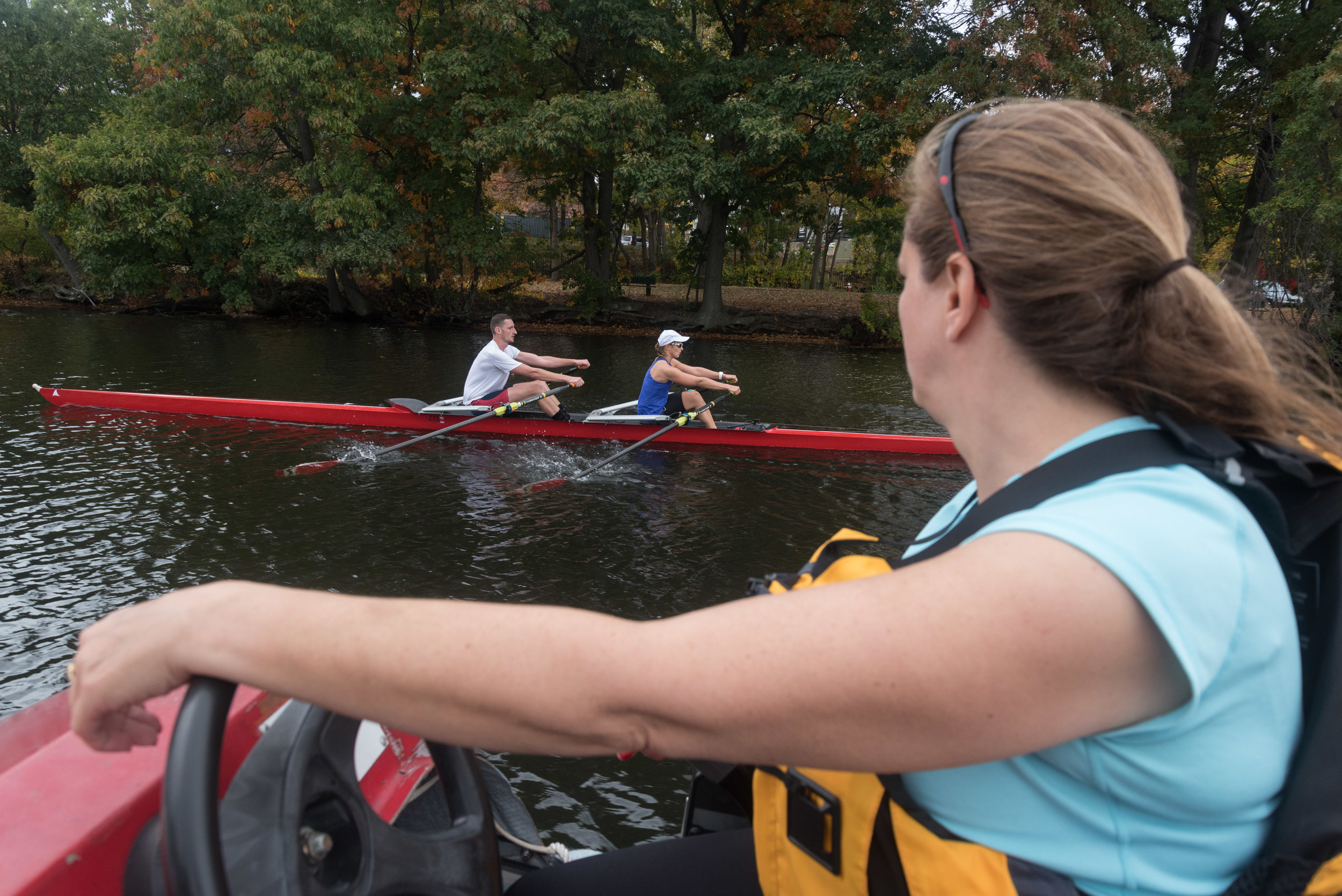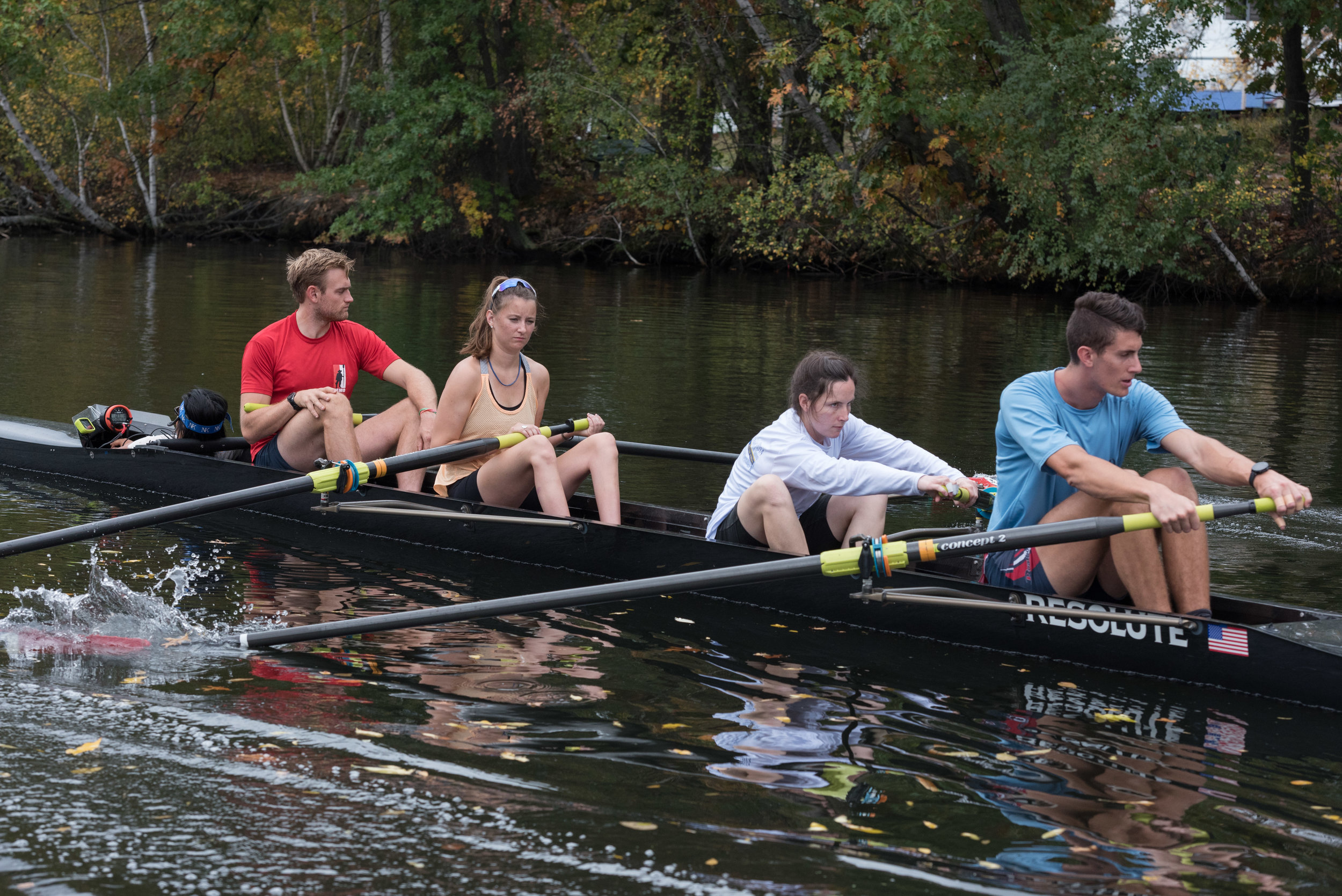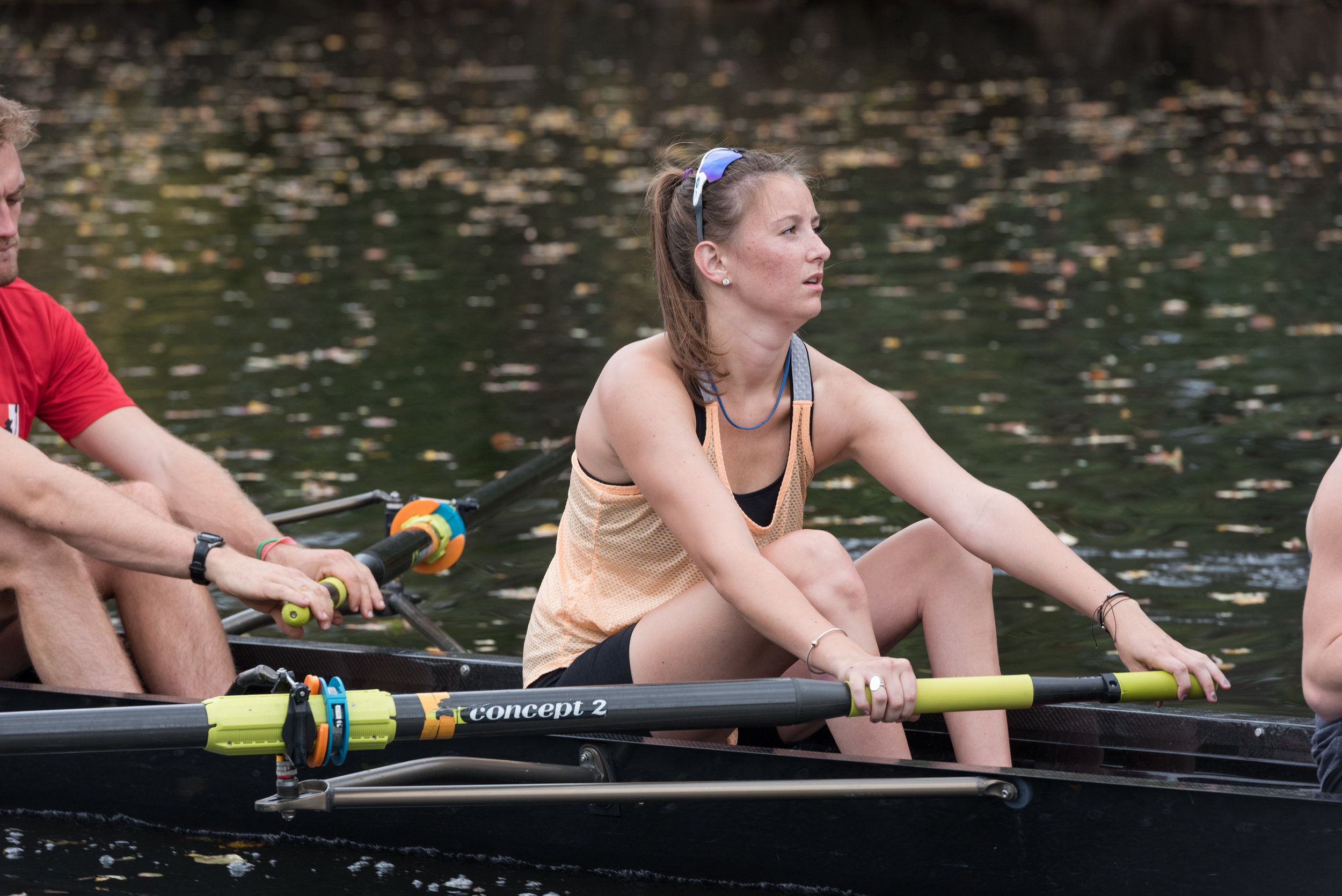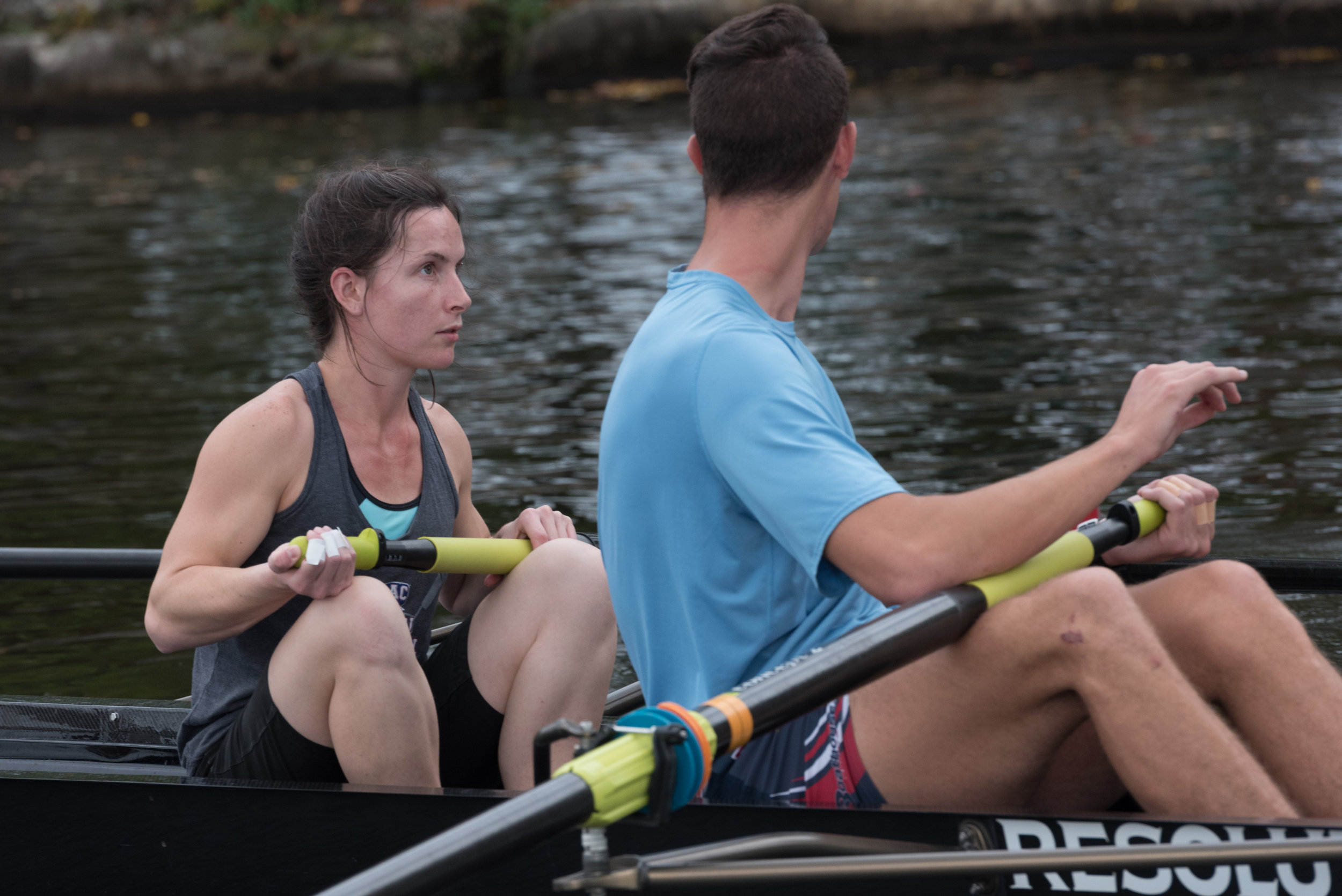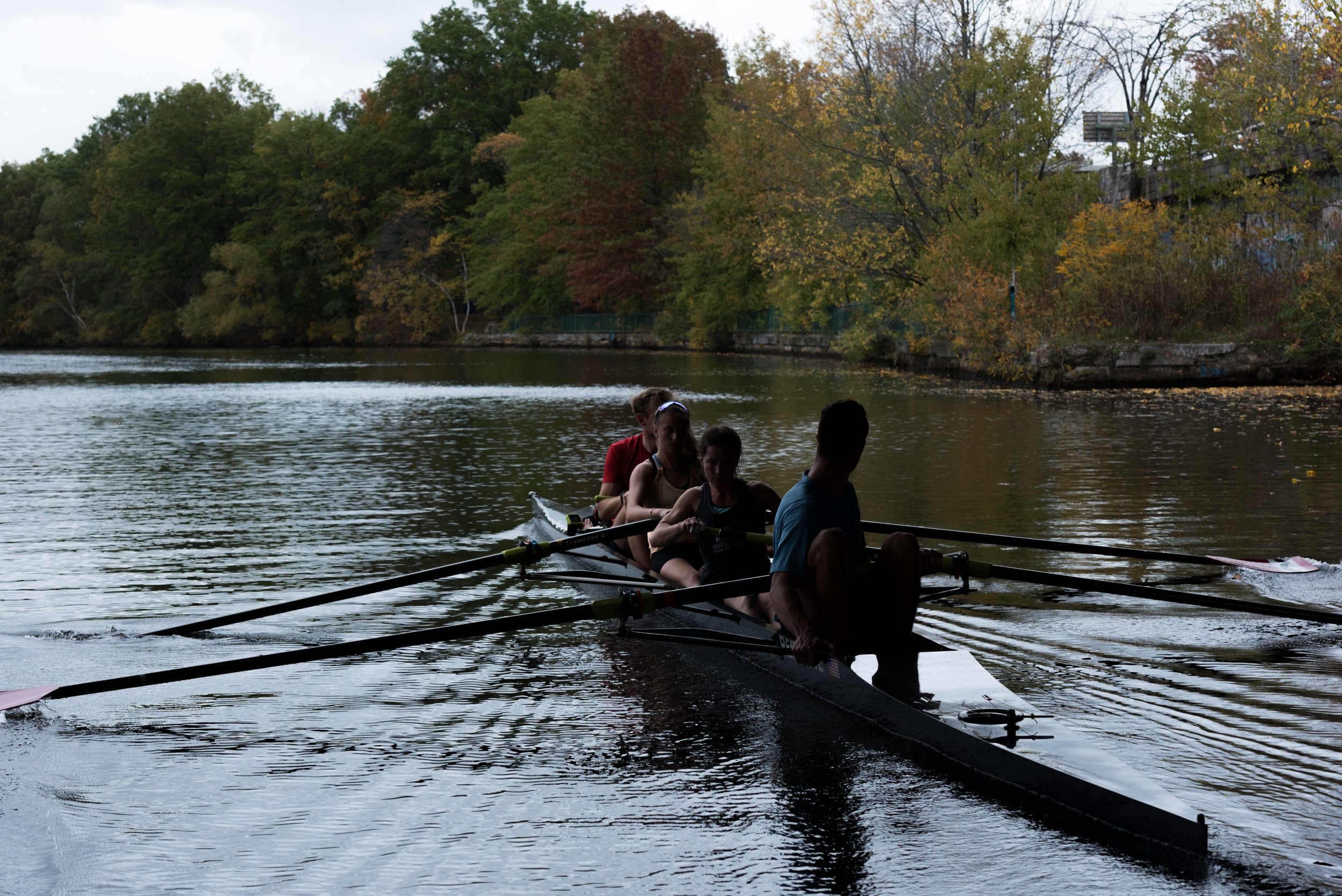Inclusion races give medals, more at Head of the Charles
By Scotty Schenck
Posted Oct. 28, 2016
The crisp night air rolled in on Saturday, Oct. 23. Kate Barrett, 24, gave her all with three other rowers during the Head of the Charles.
Off the course, Barrett is held up by two crutches. She lost most of the use of her legs after a skiing accident in Spain while she was studying abroad three years ago. In front of her is Natalie McCarthy, 29, who lost her sight when she was 11 years old. They sit in between two able-bodied rowers, who at any other time tower over them. Rowing coach Paul Casey and Olympian Austin Hack were the two able-bodied rowers on the team.
Together they were a singular, fluid unit. However, the differences in gender, strength and height required all of the rowers to adjust.
“Height is an advantage, but certainly rowers come in all sorts of sizes. The para-aspect just adds another dimension, something to think about,” Olympian Austin Hack said. He served as the stoke of the boat, sitting in the last seat.
And Hack’s height of 6’8” makes a stark contrast to McCarthy’s 5’3”. However, they spent the week before the Head of the Charles practicing and perfecting their rhythm.
Beth Noll, on the para-advisory committee for the Head of the Charles, is their coach. Another one of Noll’s teams from CRI features year-old Johanna Beyer, who moved from Austria almost three years ago. She had her leg amputated because of bone cancer. Barrett, McCarthy, Hack and Casey finished first in the inclusion fours, and Breyer and her inclusion doubles partner, three-time U.S. national team member Matt Wheeler.
For these rowers, it’s less about the medals and more about the chance to compete like every other rower. It’s about inclusion.
“Everybody who’s a rower wants to get into the Head of the Charles,” Noll said. “It opens people’s minds. It’s an important way for [para-rowers] to improve themselves.”
